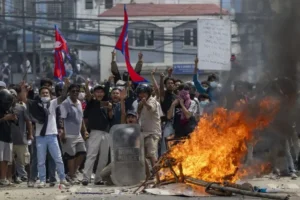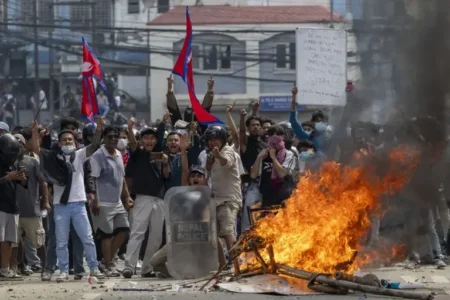A large rescue mission was underway in Afghanistan on Monday, after a powerful earthquake and many aftershocks destroyed homes in a remote mountainous region, killing more than 800 people, according to Taliban officials.
The earthquake struck soon before midnight, rattling buildings from Kabul to Islamabad, the capital of neighboring Pakistan.
According to the US Geological Survey (USGS), more than 1.2 million individuals were likely to experience strong or very intense shaking.
Approximately 800 people were killed and 2,500 injured in distant Kunar province alone, according to main Taliban government spokesman Zabihullah Mujahid.
Another 12 people were killed and 255 injured in neighboring Nangarhar province, he said.
“Numerous houses were destroyed,” interior ministry spokesman Abdul Mateen Qani told AFP.
The vast majority of Afghans live in low-rise, mud-brick structures that are prone to collapse.
“Some of the most severely impacted villages in remote Kunar provinces remain inaccessible due to road blockages,” the UN migration agency warned in a statement to AFP.
The Taliban authorities and the United Nations coordinated rescue efforts in hard-hit districts. According to the defense ministry, 40 flight sorties have been carried out thus far.
A member of the agricultural department in Kunar’s Nurgal district said locals had hurried to remove blocked roads to isolated villages, but the worst-hit places were remote and had limited telecommunication networks.
“There is a lot of fear and tension… Children and women were screaming. We had never experienced anything like this in our lives,” Ijaz Ulhaq Yaad told AFP.
He claimed that many living in quake-hit communities were among the more than four million Afghans who have returned to the country from Iran and Pakistan in recent years.
“They wanted to build their homes here.”
According to the USGS, the quake struck at a relatively shallow depth of eight kilometers, 27 miles from Jalalabad in Nangarhar province.
Nangarhar and Kunar provinces share a border with Pakistan, and the Torkham River has seen many waves of Afghan returnees who have been deported or forced to flee, often with no work and nowhere to go.
UN Secretary-General Antonio Guterres expressed his sympathies, which were echoed by the Taliban administration and other governments.
“I stand in full solidarity with the people of Afghanistan after the devastating earthquake that hit the country earlier today,” he said.
Following the original quake, at least five aftershocks occurred throughout the night, the biggest being a magnitude 5.2 just after 4:00 a.m. (2330 GMT Sunday).
Earthquakes frequently strike Afghanistan, particularly in the Hindu Kush mountain range at the Eurasian-Indian tectonic plate boundary.
Flooding in Nangarhar province occurred overnight Friday to Saturday, killing five people and destroying crops and property, according to provincial authorities.
In October 2023, a 6.3-magnitude earthquake struck western Herat province, killing over 1,500 people and damaging or destroying over 63,000 dwellings.
In June 2022, a 5.9-magnitude earthquake devastated the poor eastern border region of Paktika, killing over 1,000 people and displacing tens of thousands.
Afghanistan, devastated by four decades of conflict, is already dealing with a number of humanitarian challenges.
Since the Taliban’s return, foreign funding to Afghanistan has been cut, jeopardizing the already destitute country’s ability to respond to calamity.










